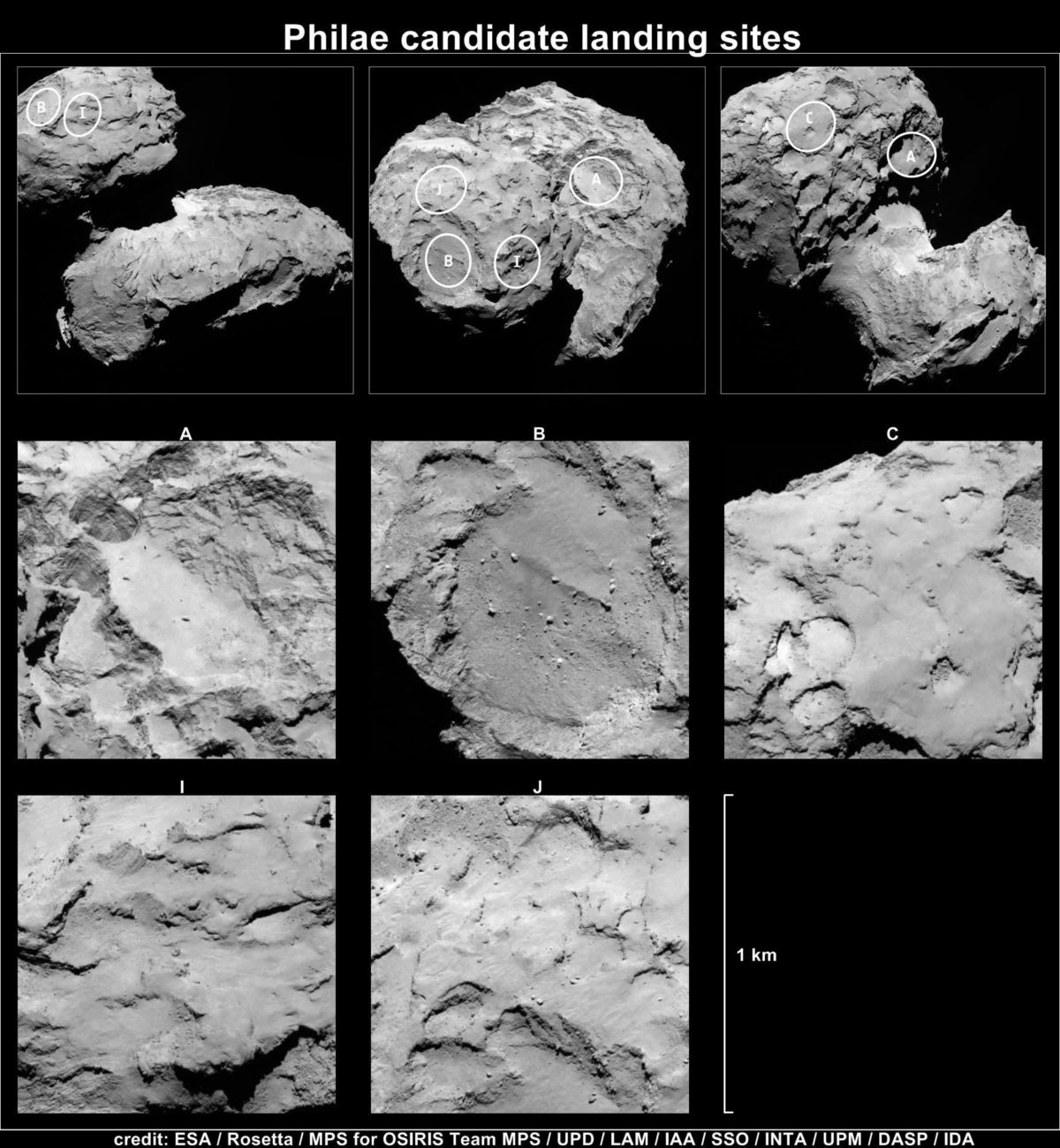Bruce Murray Space Image Library
Five possible landing sites for Philae

An alternative view of the five sites, from a CNES release:
More information on each site from an ESA press release:
Site A is an interesting region located on the larger lobe, but with a good view of the smaller lobe. The terrain between the two lobes is likely the source of some outgassing. Higher-resolution imaging is needed to study potential surface hazards such as small depressions and slopes, while the illumination conditions also need to be considered further.
Site B, within the crater-like structure on the smaller lobe, has a flat terrain and is thus considered relatively safe for landing, but illumination conditions may pose a problem when considering the longer-term science planning of Philae. Higher-resolution imaging will be needed to assess the boulder hazards in more detail. In addition, the boulders are also thought to represent more recently processed material and therefore this site may not be as pristine as some of the others.
Site C is located on the larger lobe and hosts a range of surface features including some brighter material, depressions, cliffs, hills and smooth plains, but higher-resolution imaging is needed to assess the risk of some of these features. It is also well illuminated, which would benefit the long-term scientific planning for Philae.
Site I is a relatively flat area on the smaller lobe that may contain some fresh material, but higher-resolution imaging is needed to assess the extent of the rough terrain. The illumination conditions should also allow for longer-term science planning.
Site J is similar to site I, and also on the smaller lobe, offering interesting surface features and good illumination. It offers advantages for the CONSERT experiment compared with Site I, but higher-resolution imaging is needed to determine the details of the terrain, which shows some boulders and terracing.


 Explore Worlds
Explore Worlds Find Life
Find Life Defend Earth
Defend Earth


